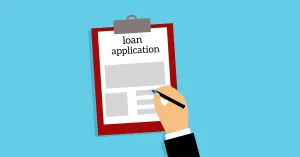One big issue the Rules of Thumb blog from MoneyThumb hears about from lenders is that it takes too long for underwriters to process loan applications. An old adage among lenders is believing underwriters look for ways to turn down loans. However, today we would like to debunk that myth by getting into the mind of the underwriter. Let's look at things from the underwriter's point of view.
Knowing and understanding underwriting guidelines will make your lending process much smoother and easier, and help loans become processed much more quickly. Lenders should understand why underwriters exist and the vital role they play in the stability of the lending industry. There is a reason why we have underwriters: It is to approve or decline a loan, as well as to ensure that your lending company has fundable and performing loans in regards to collateral and capacity.
From an underwriter's point of view, your job as a lender is to follow your own lending guidelines so you can present your borrowers with the best loan alternatives. You should look at how your underwriter will view those guidelines and what documentation is required to satisfy them.
If you have questions for your underwriter once the loan process is underway, pick up the phone and call them or send an e-mail asking for further clarification. It is better to know and educate yourself on the underwriting guidelines at the beginning of the lending process than to push forward and end up with a turndown.
One big beef underwriters have with lenders is that too often, a lender will just forward pay stubs from borrowers, for example, never even opening up the e-mails to review the documents and verify that they actually are pay stubs or to see if there is anything different from previous pay stubs. A change in hours worked, a new garnishment, a decrease or increase in pay, an address change or new deductions are red flags that lenders need to watch for. Another reasons underwriters constantly ask for more information is that they often receive documents piecemeal. Learn from this and send complete documents all at one time.
These are areas the underwriter will review and if your underwriter finds any discrepancies, additional conditions will likely be added. Unfortunately, a lot of knowledge in this industry is learned “on the job” and “as you go.” The best way to teach yourself is to learn from your mistakes. When you receive a loan decision — whether good or bad — see what you can learn from it so you won’t make the same mistakes again.
Set expectations up-front with your borrowers. Let them know that your goal is to make the process as smooth and stress-free as possible from start to finish. One great way to make this happen is by using the PDF financial file converters from MoneyThumb designed specifically for lenders. This way, your applicants' bank statements will be presented to your underwriter complete and in tip-top shape.
Don’t get mad or upset with your underwriters. They are only doing their job, which is looking out for the well-being and best interests of all parties involved. They are there to protect you as a lender. An underwriter can turn out to be your best friend in the lending process when you adhere to your own lending guidelines and follow the above advice.





















Add comment